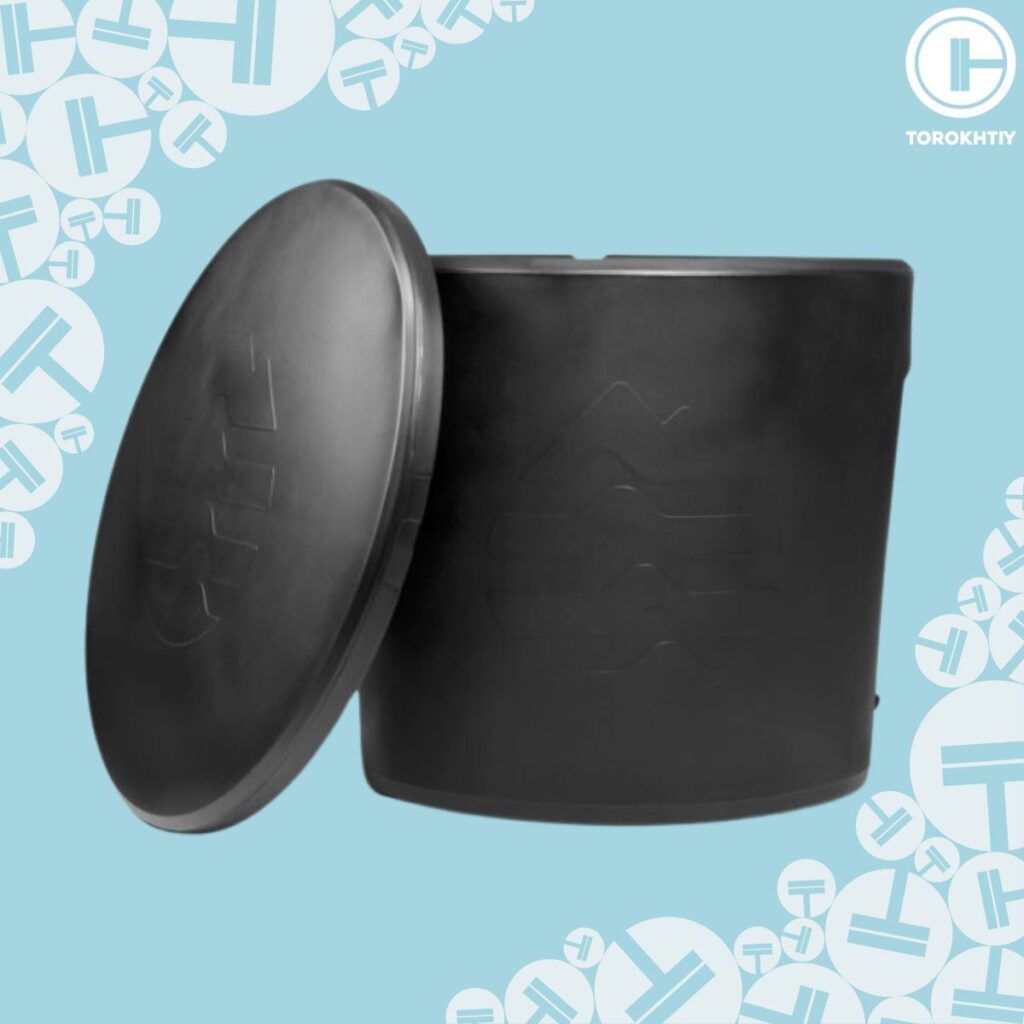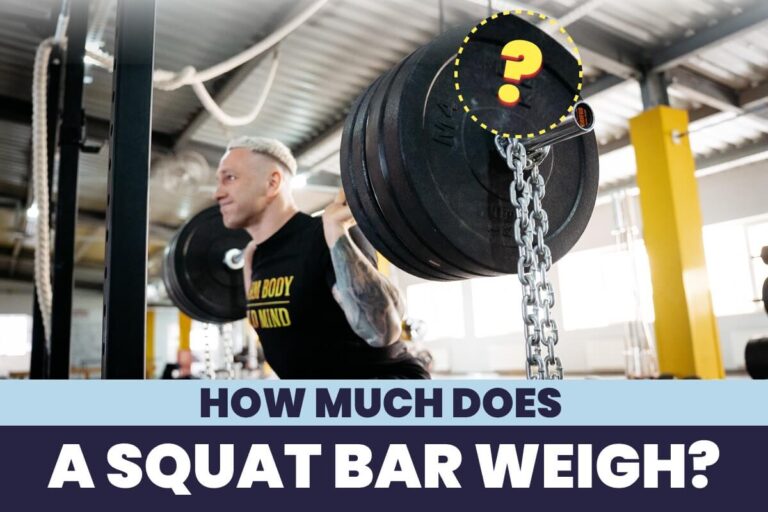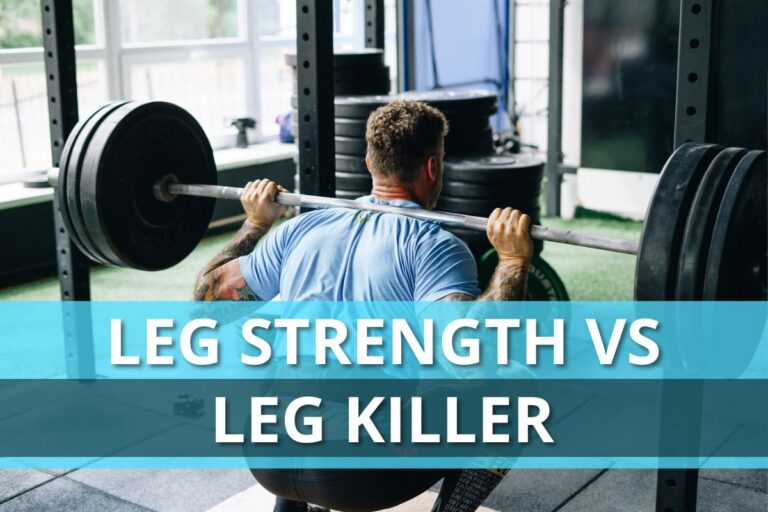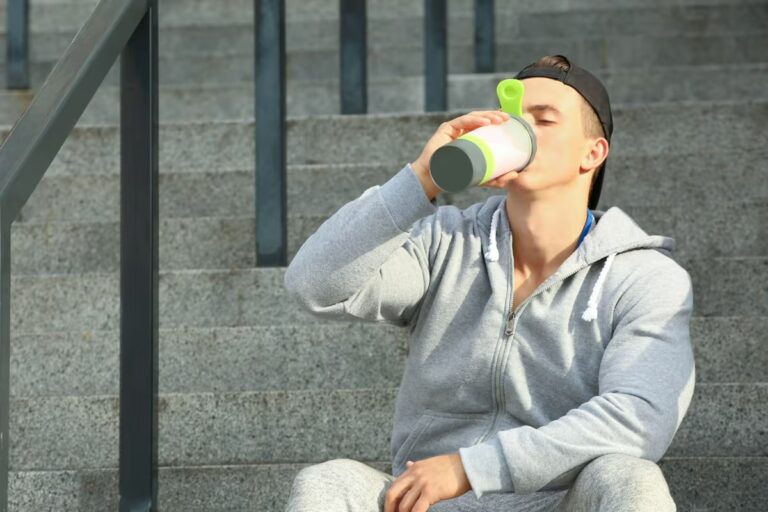Ice Bath Vs Hot Bath: Which Is More Effective?
What should you choose between ice bath vs hot bath, and is it good to go from ice bath to hot tub in case you’re looking to do both?
If a hot bath exists, why would you subject yourself to an icy one? That’s a good question. An ice bath, although uncomfortable, can literally shock your body into rejuvenation and it can speed up muscle recovery. A hot bath, on the other hand, is comforting, improves circulation, and it’s the best way to end a busy day. But which is better for you?
What Is the Difference Between an Ice Bath vs Hot Bath? The difference between them is in their bodily effect. Ice baths stimulate cold shock proteins, can help with alertness and muscle recovery, and hot baths induce heat shock proteins, promote relaxation and circulation. Both are good for recovery and blood flow but are ideal at different times.
Each has a purpose, so you want both, so it’s not so much about choosing between the two; it’s about knowing the ideal time to use them. Both an ice bath and a hot bath have specific advantages, and if you want to get the most out of them, you need to understand the differences.
Let’s see when to take a comforting, warm bath, and when you should opt for a chilly one.
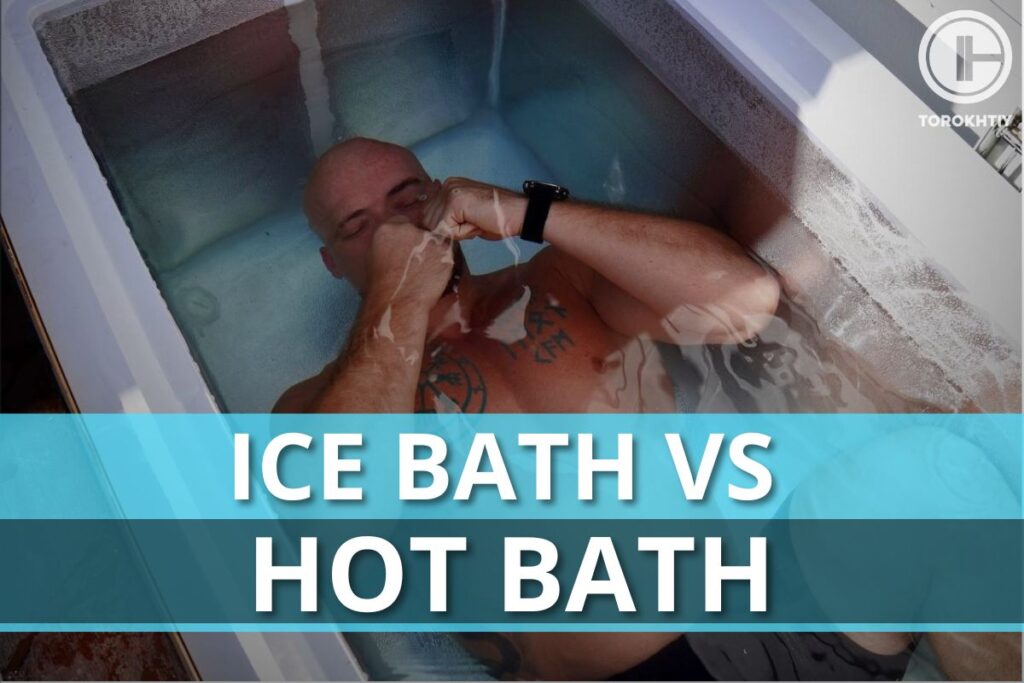
4 Differences Between Hot Bath vs Ice Bath
One relaxes you, the other makes you uncomfortable, and it doesn’t take a genius to know which does what. But is there a difference beyond just temperature? Does a hot bath help sore muscles, or does it just make you warm and happy? And what’s really the deal with an ice bath?
Let’s see!
1. Impact on Circulation
Different temperatures have different impacts on blood circulation. A hot bath will dilate your blood vessels and increase the blood flow to the skin’s surface.
An ice bath will do the opposite – it will constrict the blood vessels (acutely) and temporarily reduce the blood flow to your extremities, until you get out of the ice bath. It’s also an effective way to improve circulation.
2. Impact on Muscles
The higher temperature of a hot bath will relax your muscles and soothe any aches. This is part of the reason why a hot bath is so relaxing. An ice bath will temporarily constrict the vessels, and it can increase both metabolic activity and heart rate.
The low temperature will also help with muscle soreness and alleviate pain because it will also introduce a temporary numbness.
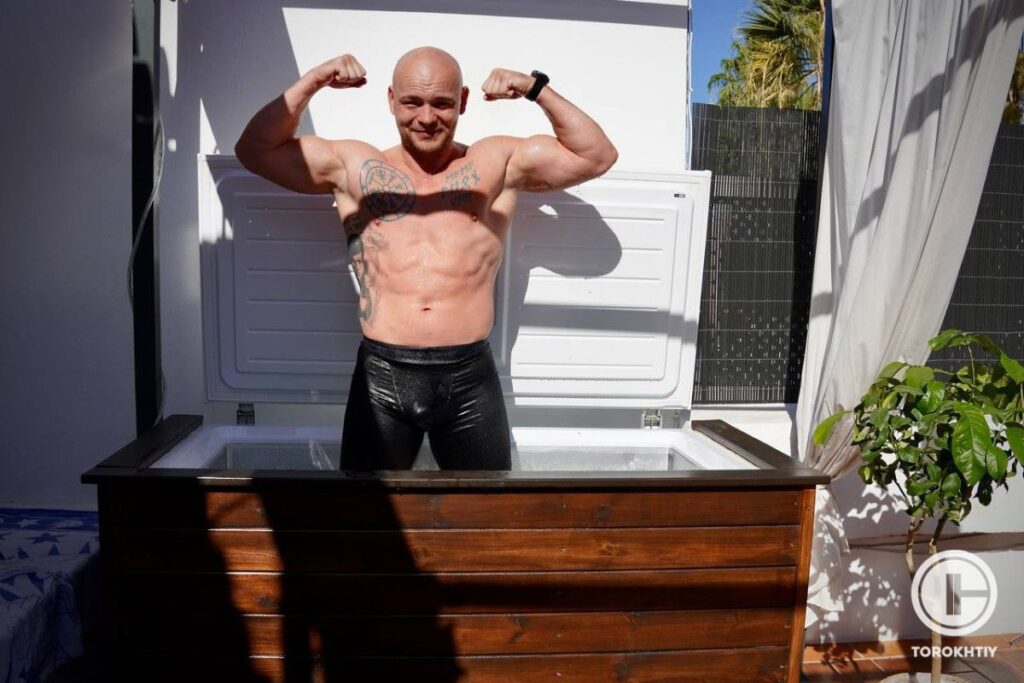
3. Managing Inflammation
Both can manage inflammation, but an ice bath does it better. A hot bath will increase the blood flow, which can disperse some inflammatory agents, but an ice bath will slow the inflammatory response altogether. Taking an ice bath is very popular for recovery after injuries or intense workouts.
4. Relaxation
A hot bath is the number one choice for a lot of people when it comes to relaxing – it reduces stress, calms you down, and helps you relax in general. An ice bath is a different story. The cold can give you a quick energy boost and stimulate the release of adrenaline, but it won’t give you that nice, almost sleepy feeling like a hot bath will.
| Aspect | Hot Bath | Ice Bath |
|---|---|---|
| Impact on Circulation | Dilates blood vessels, increases blood flow | Constricts blood vessels during the ice bath, acutely reduces blood flow to extremities |
| Impact on Muscles | Relaxes the muscles, soothes aches | Increased metabolic activity, pain relief |
| Managing Inflammation | Can disperse some inflammatory agents | Can reduce the inflammatory response, very effective for recovery |
| Relaxation | Reduces stress, makes you calm | Provides a quick energy boost and stimulates adrenaline release, helps with stress management |
5 Benefits of Ice Baths
The idea of getting into a tub of icy water probably doesn’t sound the best, but once you see all the benefits it has, you’ll be excited to jump in and chill out (literally).
✅ Muscle Recovery
The icy water will initially constrict your blood vessels and reduce metabolic activity, which can help you recover from muscle soreness and fatigue.
✅ Pain Relief
Do you know how an ice cube can make your skin numb? That’s exactly how cold water helps with the pain. It immediately relieves pain because it provides a numbing sensation. Be sure that you apply cold therapy properly for that reason.
✅ Help with Inflammation
An ice bath will constrict the blood vessels, which will limit the release of inflammatory agents. This makes it super effective for managing inflammation. However keep in mind that inflammation plays a crucial role in the recovery process and is not there without a reason. That’s why timing your ice bath correctly is important.
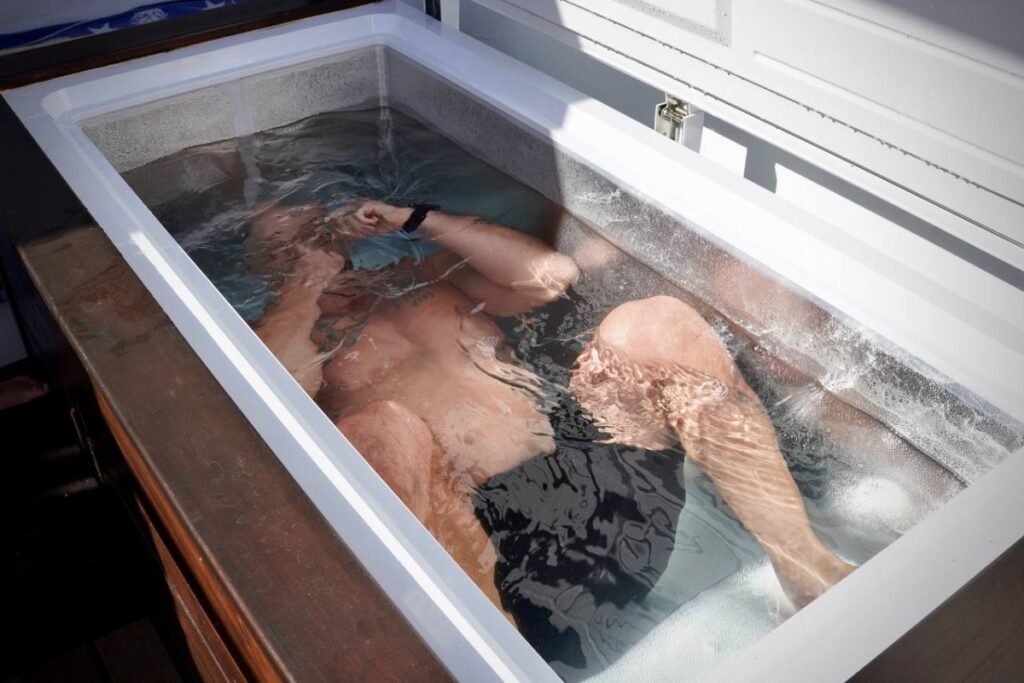
✅ Better Circulation
Although the cold will constrict your blood vessels at first, the rewarming process that comes after will prompt vasodilation and improve overall circulation.
✅ Stronger Immune System
The stress response that’s triggered by exposing yourself to cold water can improve your immune system over time. Regular exposure to low temperatures has been linked to increased production of certain immune cells.
4 Benefits of Hot Baths
A hot bath is one of the best things in the world. That warm, cozy feeling you get from it is hard to beat, but it has other benefits apart from relaxation.
✅ Stress Reduction
Hot water has a calming effect, and it triggers the release of endorphins, which is your body’s natural way of reducing stress and improving mood.
✅ Better Sleep
Your body temperature rises while you’re in the bath, and once you get out of it, it drops. This drop in temperature can help signal the body that it’s time to wind down, which will help you sleep better.
✅ Help with Respiratory Issues
The steam from the hot bath can help with respiratory congestion. Inhaling warm, moist air can helps for congested sinuses and mild respiratory discomfort.
✅ Managing Joint Pain and Arthritis
People who struggle with joint pain or arthritis are often encouraged to take hot baths. The warmth will reduce stiffness and ease the discomfort.

Ice Bath vs Hot Bath: When to Do Both?
By now it’s pretty obvious you need both, right? But the trick to making them work is knowing the right timing.
An ice bath is best in the morning or the first half of the day, but if you want to take an ice bath after a workout, make sure to wait for 4 to 6 hours after you’re done exercising so your body can start its natural recovery process. An ice bath doesn’t necessarily have to be connected to a workout, you can still get all the benefits from it the next morning.
Hot baths are ideal at the end of the day, preferably before going to bed. The warmth will prep your body to naturally lower its core temperature by stimulating its cooling mechanism, which is necessary for falling asleep.
Remember that timing is everything when it comes to benefits.
Ice Barrel We Recommend for an Ice Bath
Your tub will be great for a hot bath, but the Ice Barrel 300 is a much better choice for an icy one. It’s fully insulated, easy to use, and has a seat inside. The upright seated position will make sure you can stay there as “comfortably” as possible .

It’s made in the USA using recycled materials, and it weighs 61 lbs empty. Once you fill it up, the weight goes up to 700 lbs, and it holds 77 gallons of water. It’s not too expensive and it’s covered by a limited lifetime warranty.
Positives:
Could be better:
FAQ
Is a Cold Bath Better Than a Hot Bath After a Workout?
Which one is better, an ice bath or a hot tub after workout, will depend on your needs and preferences. A cold bath is better for reducing inflammation, it will help with sore muscles, and speed up recovery (just make sure not to hop in an ice bath for the first 4-6 hours after a workout).
A hot bath, on the other hand, will relax your muscles, ease the tension, and help with stress.
Do Cold Showers Affect Muscle Growth?
Cold showers can lower the inflammation, potentially reducing muscle growth if you take it right after a workout. Keep in mind that the key factors are temperature and duration of exposure. Done correctly can help you recover better/faster, potentially improving workout capacity.
Conclusion
Hot bath or cold bath, relaxation and recovery, proper timing… Who knew there’s so much behind just a simple change in temperature? Well, now you know, and you can share what you learned with everyone around you. Remember to time your baths properly and you’ll enjoy all the benefits!
The rule of thumb will be to keep deliberate cold exposure in the morning to help you with upcoming day, and leave heat therapy for the evening, before bed, to help you sleep better.
Another thing to remember is that you can’t overstate the importance of a good tub. Your bathtub will do for a hot bath, but go with the Ice Barrel 300 for a cold one.
And that’s it! Now we want to hear about your bathing habits, and which bath do you think has more benefits – a hot, steamy, bubbly one, or one that will make you shiver? Have you tried the Ice Barrel 300? How often do you take ice baths? Do you use a hot bath for anything other than relaxing?
We can’t wait to hear your thoughts and opinions, so leave a comment or two!
Also read:
- What to Do After an Ice Bath
- Best Budget Ice Bath
- Cold Plunge or Cold Shower
- Ice Bath Before Workout
- How Much Ice for Ice Bath
- Best Ice Bath Tubs
References:
- Beat Knechtle, Zbigniew Waśkiewicz, Caio Victor Sousa, Lee Hill, and Pantelis T. Nikolaidis “Cold Water Swimming—Benefits and Risks: A Narrative Review,” International Journal of Environmental Research and Public Health 17, no. 23 (2020): 8984.
- Colleen Travers “Take The Plunge—Into An Ice Bath?,” The Well by Northwell, https://thewell.northwell.edu/healthy-living-fitness/benefits-of-ice-baths (accessed January 22nd, 2024)
- Jaime Osnato “Does Taking a Hot Bath Really Have the Same Health Benefits as Exercising?,” Livestrong, https://www.livestrong.com /article/13767966-exercise-hot-bath-benefits/ (accessed January 22nd, 2024)
- “Brrr! What To Know About Cold Plunges,” Cleveland Clinic, https://health.clevelandclinic.org /what-to-know-about-cold-plunges (accessed January 22nd, 2024)
- M. Koda, S Komori, M. Nagami, M. Minohara, Y. Murawaki, Y. Horie, T. Suou, H. Kawasaki, S. Ikawa “Effects of Bathing in Hot Water on Portal Hemodynamics in Healthy Subjects and in Patients with Compensated Liver Cirrhosis,” Internal Medicine 34, no. 7 (1995): 628-631.
- Photo by Hot Bath canva.com
Why Trust Us?
With over 20 years in Olympic Weightlifting, our team does its best to provide the audience with ultimate support and meet the needs and requirements of advanced athletes and professional lifters, as well as people who strive to open new opportunities and develop their physical capabilities with us.
By trusting the recommendations of our certified experts in coaching, nutrition, dietology, and sports training programming, as well as scientific consultants, and physiotherapists, we provide you with thorough, well-considered, and scientifically proven content. All the information given in the articles concerning workout programming, separate exercises, and athletic performance, in general, is based on verified data. We ensure that you can rely on our professionals’ pieces of advice and recommendations that can be treated as personalized ones which will benefit you and fully meet your needs.
The product testing process is described in more detail here
Author: Jacek Szymanowski
Certified Nutritionist,
M.Sc.Eng. Biotechnology
Performance Architect,
Strength and Conditioning Specialist
With over 30 years of fighting experience, specialization in nutrition coaching for athletes, and expertise in metabolic health and dietary strategies, Jacek offers a comprehensive approach to optimizing your performance and well-being. Backed by a Master of Science degree in Biotechnology, Jacek remains at the forefront of scientific advancements, ensuring that his coaching is always evidence-based and up-to-date.

